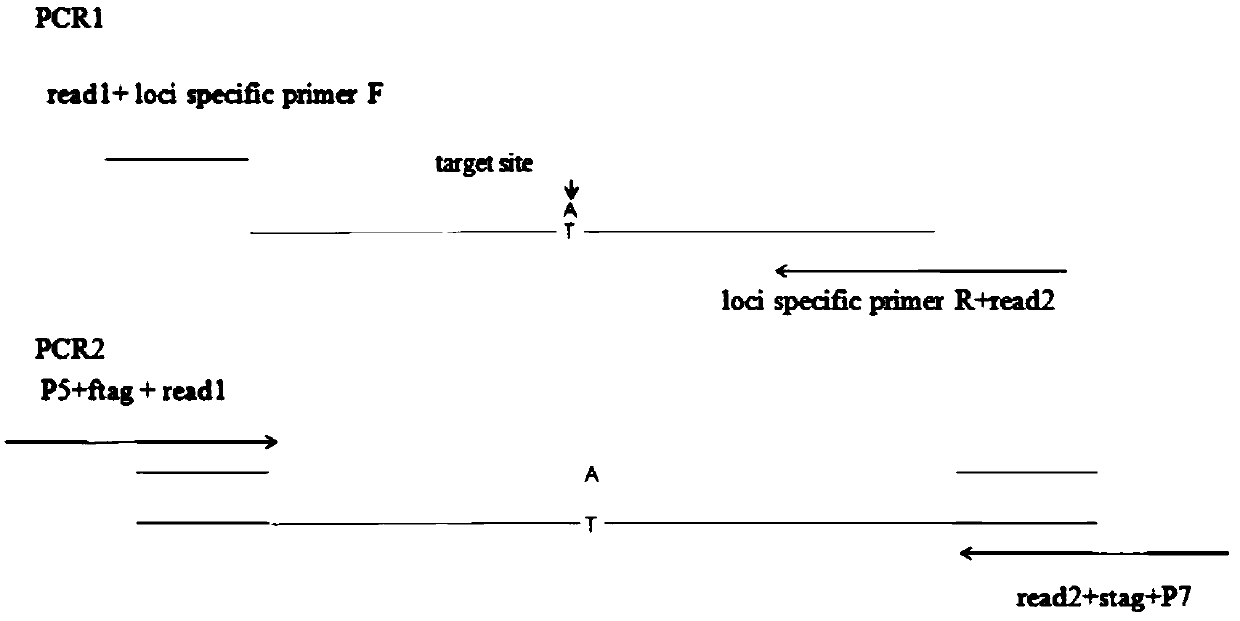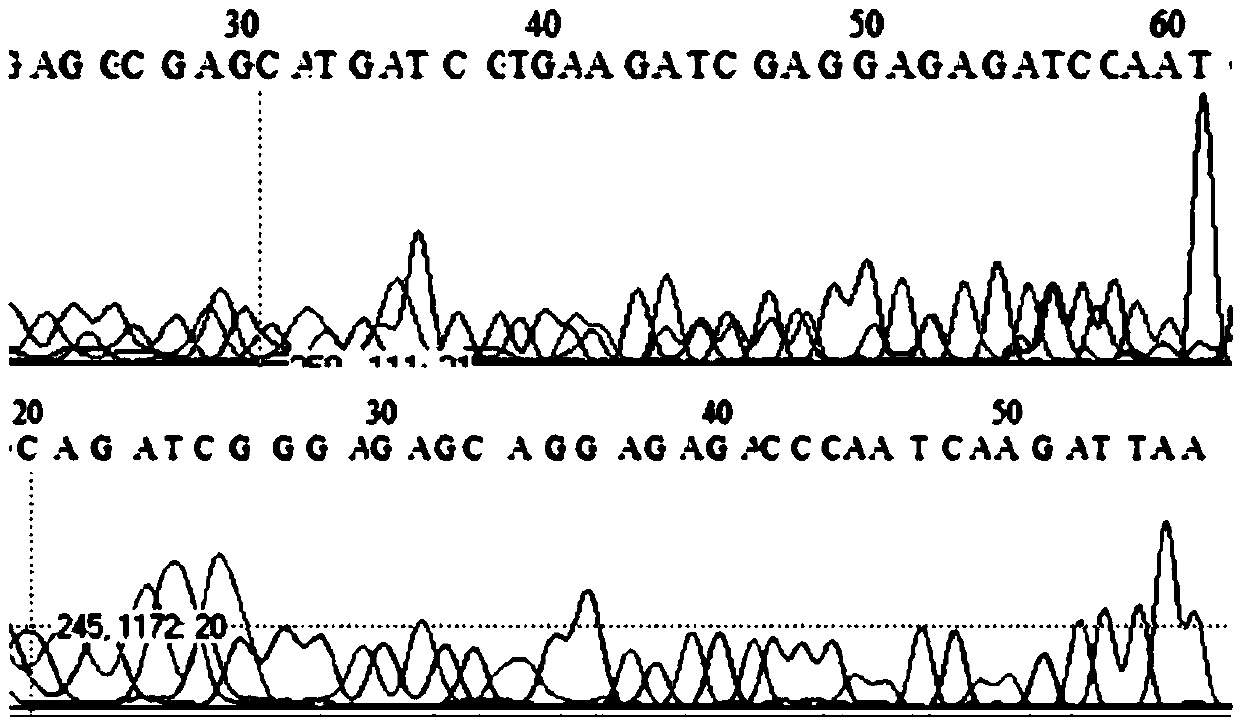Molecular marker detection method based on next-generation sequencing technology
A next-generation sequencing technology and molecular marker technology, applied in the field of molecular marker-assisted breeding, can solve the problems of indels, low throughput, and high labor cost, and achieve the effects of low cost, high throughput, and high speed.
- Summary
- Abstract
- Description
- Claims
- Application Information
AI Technical Summary
Problems solved by technology
Method used
Image
Examples
Embodiment Construction
[0060] In order to make the object, technical solution and advantages of the present invention more clear, the present invention will be further described in detail below in conjunction with the examples. It should be understood that the specific embodiments described here are only used to explain the present invention, not to limit the present invention.
[0061] The method for molecular marker detection using next-generation sequencing technology provided by the embodiment of the present invention
[0062] 1) Collection of sequence information of agronomic traits-related gene variation sites or linkage sites
[0063] The extraction of the variation site and linkage site information of the cloned agronomic trait-related genes is based on the following three principles: 1. For the cloned gene, only select the key variation site that has been confirmed to control the function of the gene as the target site. 2. For genes with related sites that have been cloned but have not be...
PUM
 Login to View More
Login to View More Abstract
Description
Claims
Application Information
 Login to View More
Login to View More - R&D
- Intellectual Property
- Life Sciences
- Materials
- Tech Scout
- Unparalleled Data Quality
- Higher Quality Content
- 60% Fewer Hallucinations
Browse by: Latest US Patents, China's latest patents, Technical Efficacy Thesaurus, Application Domain, Technology Topic, Popular Technical Reports.
© 2025 PatSnap. All rights reserved.Legal|Privacy policy|Modern Slavery Act Transparency Statement|Sitemap|About US| Contact US: help@patsnap.com



